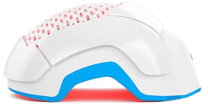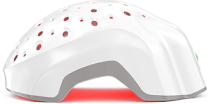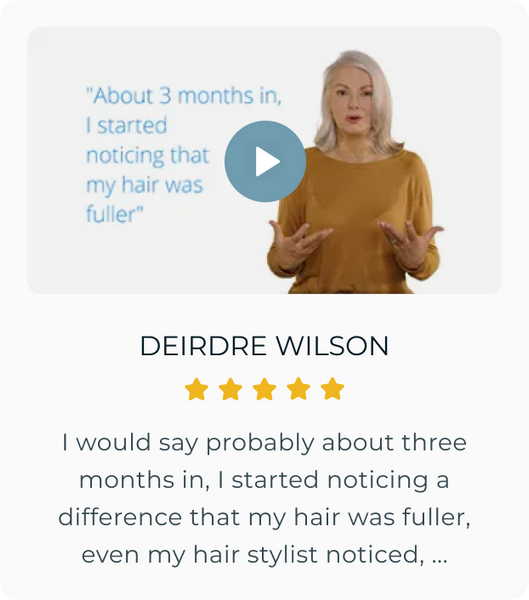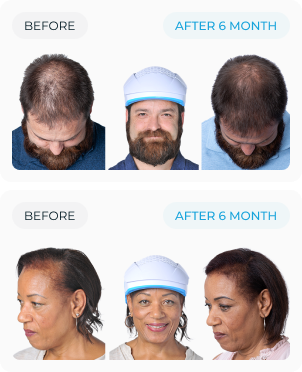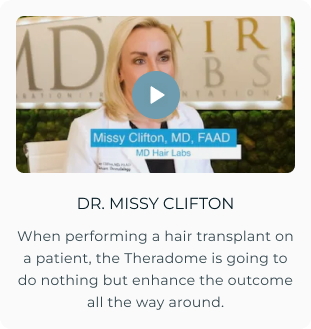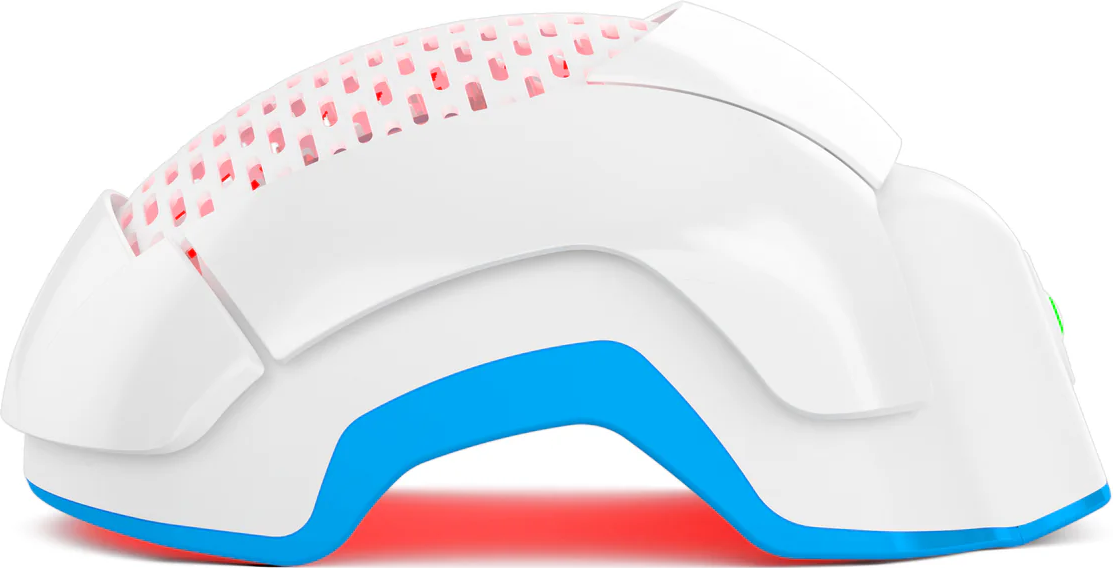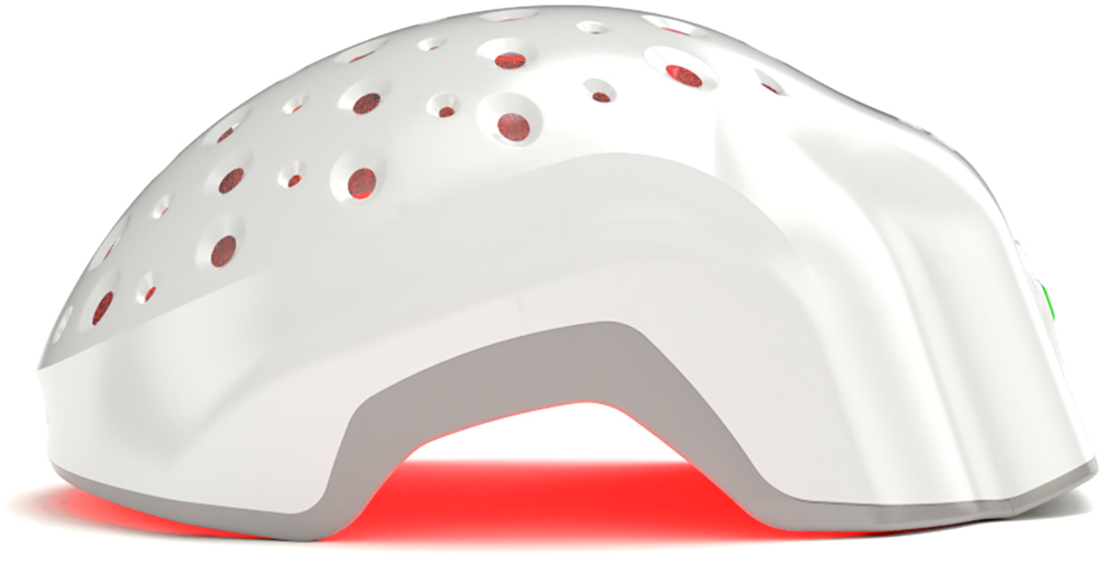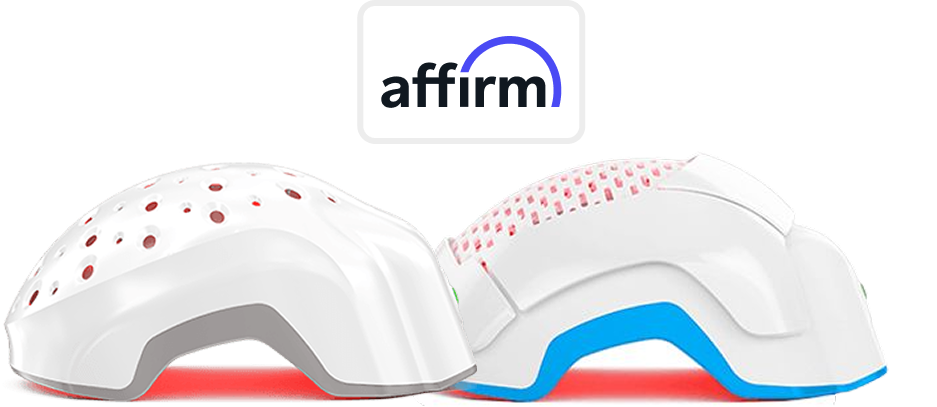Your hair doesn’t have nerves, but your scalp does. If you’ve ever wondered, "Why does my scalp hurt when I move my hair?", you’re not alone. That weird, tender sensation can range from mildly annoying to straight-up painful, turning a simple hair flip into an unexpected headache.
Scalp pain is often a sign that your hair follicles, nerves, or skin barrier are irritated, inflamed, or just plain exhausted. Whether it’s a too-tight ponytail, product buildup suffocating your roots, or an underlying skin condition throwing a fit, there’s always a reason behind that discomfort. And no, you don’t have to just “wait it out” while wincing every time you touch your hair.
The good news is that most causes of scalp pain are temporary and treatable; however, ignoring the discomfort can lead to more serious problems such as hair thinning, inflammation, or infection. If your hair hurts at the roots when moving your hair, it’s important to understand what’s causing it, what it means for your hair health, and, most importantly, how to relieve it.
How Your Scalp Can Hurt When You Move Your Hair?
Usually, moving your hair shouldn't hurt and your scalp should feel comfortable. It's not normal for your scalp to hurt when you simply move your hair. But sometimes, when you touch or move your hair in another direction, you might feel different kinds of discomfort, like:
- A sharp, dull, or aching pain on the scalp
- A stinging or burning sensation
- Tingling, prickling, or an electric shock feeling
- Itchiness
- A hair pulling or scraping feeling, like brushing your hair too hard
You might think it's your hair that’s hurting but hair doesn’t have nerves. So, the pain actually comes from your scalp, not your hair strands.
Alongside these discomforts, you might also notice other symptoms which could be a sign of something else. Look out for these symptoms:
- Red or pink patches on the scalp (may mean inflammation)
- Dry, flaky, or oozing rashes
- Scabs or crusting
- Pale or discolored skin on the scalp
These signs can help you figure out what’s behind the discomfort.
Common Health Conditions Linked to Scalp Pain
Scalp pain when moving your hair could be linked to other health issues, such as:
- Headaches – especially tension headaches that affect the scalp
- Contact dermatitis – an allergic reaction to hair products or hats
- Eczema – which can make the scalp dry and itchy
- Scalp psoriasis – a skin condition causing red, scaly patches
- Dandruff – mild scalp irritation with flaking
Why Does Your Scalp Hurt When You Move Your Hair? (11 Common Causes of Scalp Tenderness)
The causes of scalp tenderness can vary from harmless habits to underlying medical conditions. Your scalp consists of nerve endings, and even minor irritation can trigger a painful response.
Here are some of the most common reasons your scalp might hurt when you move your hair and the home remedies to get relief from your scalp pain:

1. Tight Hairstyles
Wearing your hair in tight ponytails, braids, buns, or extensions can put a lot of tension on the hair follicles. This constant pulling can irritate the roots of your hair, leading to pain when you move your hair in another direction. Over time, tight hairstyles can even lead to a condition called traction alopecia (hair loss caused by tension on the hair).
How to recognize: The pain usually starts after you've had a tight hairstyle for a while. You may feel soreness, tenderness, or even a dull ache around the areas where the hair is tightly secured. Loosening your hair often brings immediate relief.
How to get relief: Let your hair down to relieve tension and avoid tight styles for a few days. If ponytails are a must, switching to silk scrunchies instead of elastic bands can reduce stress on your roots. Massage your scalp gently to increase blood flow, and apply a warm compress to soothe the area. Use a soft, detangling brush and avoid styling products with harsh chemicals.
2. Dandruff (Seborrheic Dermatitis)
Dandruff isn't just about flakes! It's a common scalp condition called seborrheic dermatitis, where your scalp produces too much oil and reacts to a yeast-like fungus naturally found on the skin (Malassezia). This can lead to inflammation, redness, and itching, which can make your scalp sensitive and painful when you move your hair.
How to recognize: You'll likely notice greasy or dry flakes, redness, and itchiness on your scalp. Your scalp might feel tender or sore, and the pain can be more noticeable when you scratch or move your hair.
How to get relief: Use an anti-dandruff shampoo with active ingredients like ketoconazole, salicylic acid, or zinc pyrithione. Keep your scalp clean and avoid oily hair products. Try tea tree oil for its antifungal properties.
3. Sunburn
Just like the rest of your skin, your scalp can get sunburn if it's exposed to too much harsh sunlight. The delicate skin on your head gets damaged and inflamed, leading to pain and tenderness. When you move your hair, it can tug on the inflamed skin, making your hair hurt at the roots.
How to recognize: Your scalp might look pink or red, feel hot to the touch, and you'll likely experience burning, itching, and pain, especially when you move your hair. In more severe cases, you might even notice some blisters.
How to get relief: First, protect your scalp from more sun exposure – wear a hat! Cool your skin down with a cool compress (not ice packs). After-sun lotions with aloe vera can be soothing. If your pain is severe, you can take over-the-counter painkillers like ibuprofen. Don't pop any blisters, and avoid rubbing or scratching the burnt area.
4. Folliculitis
Folliculitis is the inflammation or infection of hair follicles, often caused by bacteria, fungi, or irritation. It can result in red, painful pimple-like bumps on the scalp that are sore to the touch and can make moving your hair painful.
How to recognize: You'll usually see small, red bumps or pustules (pimples with pus) around the base of your hair follicles. They might be itchy, burning, or very tender to the touch. You might also notice hair falling out more than usual in the affected areas.
How to get relief: Keep your scalp clean and dry. Warm compresses can help soothe the area and encourage pus to drain. Avoid picking or squeezing the bumps. You can use over-the-counter antibacterial or antifungal shampoos. If the infection worsens, consult a doctor for topical or oral antibiotics.
Also Read: Does folliculitis cause hair loss?
5. Allodynia
Allodynia isn't a condition itself, but rather a symptom where ordinary, non-painful sensations (like lightly touching your hair or scalp) cause pain. This happens when the nerves that carry pain signals become hypersensitive often due to underlying conditions like migraines or fibromyalgia.
How to recognize: The key sign is pain from something that shouldn't hurt at all. Even a gentle touch, a light breeze, or just moving your hair can cause significant discomfort or burning pain on your scalp. However, there might not be any visible signs of injury or irritation on your scalp.
How to get relief: Managing allodynia often involves treating the underlying condition that's causing the nerve sensitivity. Pain relievers, nerve-calming medications, and therapies like stress management or biofeedback can help. Avoid tight hairstyles, hats, or anything that puts pressure on the scalp. Practice stress-reducing activities like deep breathing or meditation.
6. Chemical Irritation
Hair dyes, relaxers, bleach, and certain shampoos can irritate the scalp. Chemicals in these products can strip the scalp’s natural oils and damage the skin barrier, leading to inflammation and pain. It can cause an allergic reaction on your scalp, making it sensitive and painful to touch or move your hair in another direction.
How to recognize: You might experience burning, itching, redness, or a rash on your scalp shortly after using a product or undergoing a chemical treatment. Your scalp might feel raw or very tender, and moving your hair can worsen the discomfort.
How to get relief: Stop using the product immediately. Gently wash your scalp with a mild, fragrance-free shampoo to remove any remaining chemicals. Apply aloe vera gel or cool compresses to soothe the irritation and get pain-free scalp. If the reaction is severe, prolonged, or involves blistering, seek medical advice. Always do a patch test before using new chemical treatments.
7. Stress and Anxiety
Our bodies react to stress in many ways, and sometimes that includes making your scalp more sensitive. High levels of stress and anxiety can lead to muscle tension and inflammation. It can affect how your nerves transmit signals, making your scalp feel tender or painful while moving your hair. This is sometimes linked to conditions like trichodynia.
How to recognize: You might notice a general scalp tenderness, headaches, or a "tight" feeling that worsens during stressful periods. There might not be any visible signs on your scalp but the pain can feel like an ache or burning, and simply touching or moving your hair can trigger it. You might also notice stress-related hair loss or hair thinning.
How to get relief: Focus on stress-reducing techniques like meditation, deep breathing exercises, yoga, or regular physical activity. Get enough sleep and try scalp massages to ease tension. If stress and anxiety are overwhelming, consider talking to a therapist.
8. Trichodynia
Trichodynia is a condition where people experience pain, burning, tingling, or itching sensations on their scalp without any obvious physical cause. It's often associated with psychological stress, anxiety, or hair loss conditions like telogen effluvium or alopecia areata, although the exact mechanism isn't fully understood. The scalp's nerve endings may be hypersensitive.
How to recognize: The scalp feels painful or sensitive without any visible signs of irritation like rashes or redness. Hair may fall out easily or feel weaker than usual.
How to get relief: Treatment often involves managing the underlying psychological factors (like stress and anxiety) or addressing any associated hair loss. Gentle scalp care, avoiding harsh products, and sometimes nerve-calming medications can be beneficial. If the pain continues, see a dermatologist for further evaluation.
9. Eczema (Atopic Dermatitis)
Eczema, or atopic dermatitis, is a chronic skin condition that causes dry, itchy, inflamed patches. When it affects the scalp, the skin becomes very sensitive, red, and often flaky. Moving your hair can stretch or irritate this inflamed skin, leading to pain and increased itching.
How to recognize: Look for dry patches, flaking, redness, and intense itching. You might see thickened or leathery patches from scratching. The skin can crack, and moving your hair can cause a stinging or burning sensation.
How to get relief: Use gentle, fragrance-free shampoos and conditioners. Avoid hot showers, which can dry out the scalp. Moisturize your scalp regularly with emollient creams or oils recommended for eczema. Over-the-counter corticosteroid creams can help reduce inflammation, but for severe cases, a doctor might prescribe stronger treatments.
10. Scalp Psoriasis
Scalp psoriasis is an autoimmune condition where skin cells grow too quickly, leading to thick, red, scaly patches (plaques) on the scalp. These plaques can be very itchy, dry, and sometimes crack and bleed. The inflammation and hardened skin make your scalp extremely sensitive, so the movement of your hair can pull on these areas and cause significant pain.
How to recognize: You'll typically see distinct, reddish patches covered with silvery scales. These patches can be very itchy and may feel painful or tender. They might bleed if scratched. The plaques can range from small to covering the entire scalp.
How to get relief: Use medicated shampoos with salicylic acid, topical corticosteroids, or tar-based products to reduce inflammation and scaling. Gently remove scales with a soft brush and avoid scratching. Moisturize the scalp regularly and consult a dermatologist for treatment options like light therapy or oral medications.
11. Dry Scalp or Dehydration
A dry scalp happens when your scalp doesn't have enough moisture. This can be due to cold weather, frequent washing, hot showers, harsh shampoos, or simply not drinking enough water. When the scalp becomes too dry, the skin can get tight, flaky, and irritated, which can lead to pain or discomfort while moving or touching your hair.
How to recognize: You may notice itchiness, tightness, flaking (like dandruff), or a sore, tender feeling on your scalp. The skin looks dull or rough, and your hair feels dry or brittle. The discomfort usually feels worse after washing your hair or being in dry environments.
How to get relief: Use a gentle, moisturizing shampoo free from sulfates and alcohol. Avoid hot showers and limit hair washing to 2–3 times a week. Stay hydrated by drinking plenty of water, and apply a hydrating scalp serum or natural oils like coconut, jojoba, or argan oil.
If your scalp pain is persistent, severe, or accompanied by other worrying symptoms, it's always a good idea to chat with a doctor or a dermatologist. They can help figure out exactly what's causing your scalp to hurt and suggest the best way to treat it.
Is It Normal If Your Scalp Hurts When Moving Your Hair?
It’s actually quite common for your scalp to feel sore and tender when you move your hair, especially if your hair strands has been stressed. Things like tight hairstyles, harsh hair products, sunburn, or heat styling tools can all make your scalp more sensitive.
However, just because it's common doesn’t mean it’s normal all the time. If your scalp pain only lasts a few days and goes away on its own, it’s usually nothing to worry about. But if the pain sticks around, gets worse, or if you notice other scalp symptoms, it’s a good idea to pay attention and talk to a doctor or a dermatologist.
Always monitor any other symptoms like redness, itching, or flaking, as these can help identify the underlying cause.
How to Treat Scalp Pain When Moving Hair?
In most cases, scalp pain goes away on its own in a few days. If it’s caused by things like tight hairstyles, sunburn, or dandruff, home remedies such as gentle scalp massage with moisturizing oils, loose hairstyles, using a clarifying shampoo, avoiding harsh chemicals, and avoiding heat styling are often enough. But if the discomfort sticks around or gets worse, it might be a sign of an underlying issue that needs medical attention.
A dermatologist or trichologist (a hair and scalp specialist) can help figure out what’s causing the pain and suggest the right scalp pain treatment.
Here are some common treatments they can recommend for a pain-free scalp:
1. Corticosteroids
These are anti-inflammatory creams or ointments that help reduce redness, swelling, and irritation.
Used for:
- Severe sunburns
- Painful chemical irritation
- Scalp eczema, psoriasis, or contact dermatitis
2. Antifungal Treatments
Antifungal shampoos and creams work powerfully against the yeast-like fungus that causes inflammation and pain, helping to soothe your itchy scalp and flaking.
Used for: Seborrheic dermatitis and fungal infections.
Types of treatment:
- Medicated shampoos with ketoconazole, ciclopirox, or selenium sulphide
- Prescription antifungal creams or oral tablets if shampoos aren’t enough
3. Antibiotics
If you have a more serious scalp infection, like persistent folliculitis, you might need antibiotics. These medicines kill the bacteria causing the infection, which helps clear up the painful bumps and tenderness around your hair roots.
Treatment: A short course of topical or oral antibiotics, depending on the severity.
4. Antihistamines
If your scalp pain is due to an allergic reaction (perhaps from a hair product), antihistamines can calm down your body's immune response. This helps relieve the itching, swelling, and sensitivity, making your scalp feel better.
5. Minoxidil
Sometimes, specific types of hair loss, like traction alopecia (from tight hairstyles) or telogen effluvium (excessive hair shedding), can make your hair hurt at the roots. Minoxidil is a well-known hair growth medication. It works by boosting blood flow to your hair follicles, which can help treat these conditions and reduce the associated scalp discomfort.
6. Specialist Referrals
If your scalp pain is linked to migraines, nerve sensitivity, or chronic stress, a specialist like a neurologist or psychiatrist may be needed.
They might recommend:
- Migraine prevention meds like beta-blockers or CGRP inhibitors
- Therapy or anxiety management tools if emotional stress is the trigger
7. Advanced Scalp Treatments
If simpler treatments don't fully help, your dermatologist might consider more advanced therapies:
- Low-Level Laser Therapy (LLLT): LLLT treatments use specific light to reduce inflammation and help your scalp heal. It can be helpful for various scalp conditions.
- Platelet-Rich Plasma (PRP) Injections: This involves injecting your own blood plasma (rich in growth factors) directly into the affected areas of your scalp. It aims to promote healing and reduce inflammation.
- Botulinum Toxin (Botox) Injections: For some types of scalp pain, especially those linked to muscle tension or certain nerve sensitivities, Botox injections can help relax muscles and reduce pain signals.
It's important to remember that the best treatment for scalp pain depends on what's actually causing it. Always talk to a healthcare professional for a proper diagnosis and personalized advice.
When to See a Doctor for Scalp Pain
Mild, occasional scalp discomfort is usually nothing to panic about, but persistent pain should never be ignored—especially if it comes with visible irritation, sores, or increased shedding. If over-the-counter treatments aren’t working or your scalp pain is worsening, a dermatologist can help identify the root cause and recommend targeted solutions.
At the end of the day, scalp pain is your body’s way of waving a red flag that something’s not quite right. Whether it’s a minor irritation or an underlying condition, listening to your scalp (yes, it has a lot to say) is the best way to keep both your hair and your comfort in check.
Is There A Connection Between Scalp Tenderness and Hair Loss?
Many researches show that scalp pain and hair loss are often connected. A study published in the Journal of Skin and Stem Cell found that trichodynia is common in people with telogen effluvium and androgenetic alopecia (male or female pattern hair loss).
This connection goes both ways:
- Scalp tenderness can cause hair loss: When the scalp becomes irritated or inflamed, it can damage the hair follicles. This may lead to temporary or even permanent hair shedding.
- Hair loss can cause scalp pain: As hair falls out, the scalp may become more sensitive. Inflammatory signals in the skin can make it feel sore, itchy, or tender.
Another study published in Dermatology Reports found that about 32% of people with hair loss also reported scalp sensitivity. The strongest association was seen in cases of telogen effluvium and alopecia areata.
LLLT treatments like Theradome laser helmet help to stop hair loss, reducing the sensitivity and pain on your scalp.
Conclusion
A sore scalp might seem like a minor annoyance, but it’s usually a sign that something’s out of balance. Whether it’s too-tight ponytails, product irritation, stress, or an underlying condition, paying attention to the cause can save you from bigger hair-related headaches.
The best part is most scalp pain issues are fixable with simple changes—loosening up hairstyles, switching to gentler hair care products, or getting the right treatments. But if your scalp stays sore for too long or comes with excessive shedding, don’t ignore it. Your follicles will thank you for getting to the root of the problem before it becomes a bigger issue.


